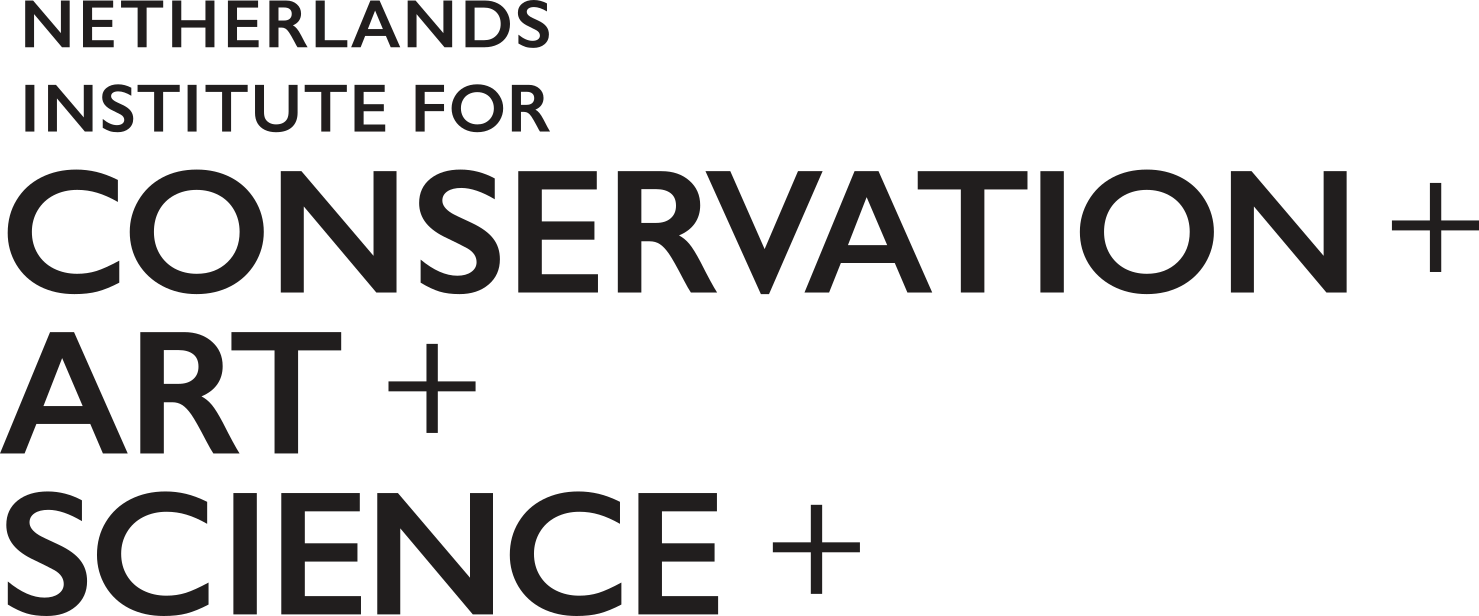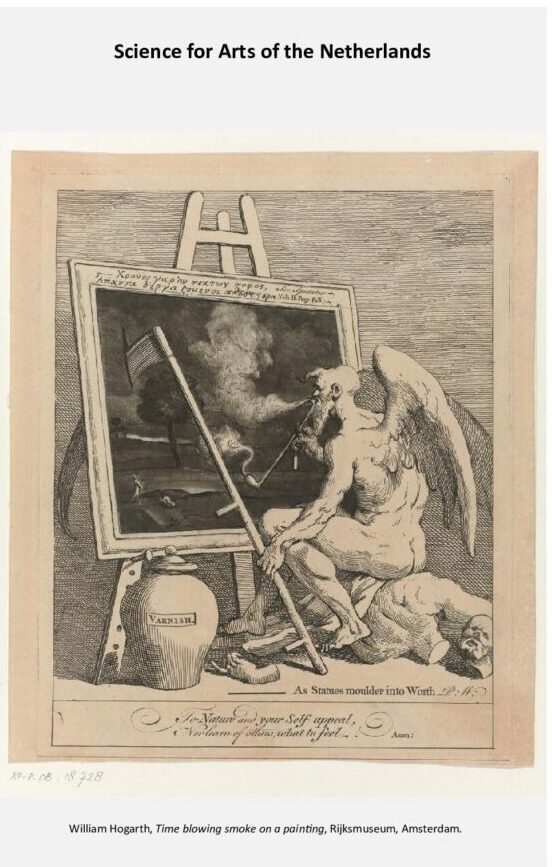Mission & History
MISSION
The Netherlands Institute for Conservation+Art+Science+ (NICAS) brings together researchers from the disciplines of conservation, art history, physical science and computer science. We want to develop the connections between these disciplines in the form of a cohesive research programme, with a focus on the origin of the object and the life of the object through time. The ultimate goal is a more complete understanding, an enriched presentation and optimal preservation of cultural heritage.
RESEARCH AGENDA
The NICAS research agenda traces the biography of the object from the moment it was conceived and made through its existence into the projected future. It spans all five themes and links them together.
► The Act of Making – The integration of different disciplines in the study of art has the potential to offer novel insights into art production, enriching the way in which we understand and contextualize artistic materials, techniques and knowledge. The focus is on the interaction between artistic ideas and processes, technical innovations and stylistic developments.
► Measurement of Change – A true understanding of cultural heritage requires that we understand the processes of change. By adapting existing technologies and creating new ones, we can gain more detailed knowledge about these processes. The emphasis is on the reconstruction of past change, real-time monitoring – both of environmental conditions and treatment – and predictive modelling of future change.
► Perception of Change – In addition to measuring the extent and rate of change in object, we also need to study the various ways in which change is perceived by stakeholders in the heritage field. What do they define as ‘change’, how does this affect the function and visual appearance of our cultural heritage, and how is that change perceived and valued?
► Management of Change – Innovative conservation methods and theories deal with the effects of change. At what point and how do we intervene? The emphasis is on a more sustainable form of conservation. What are the standards we adhere to, what is the scientific basis for these standards, and how can we use these standards flexibly and creatively? Which materials are suitable for use in conservation treatment and what are their long-term effects?
► Connecting Data – In order to reconstruct the biography of the object and to make informed decisions about the treatment of objects, we need to connect data of different types: analytical, historical, cultural and social. New standards for data collection and storage are necessary that facilitate the sharing and comparing of data. In addition, we need to build networks of databases and digital tools for accessing and mining these that will allow us to ask and answer more ambitious questions about our collections.
► Presenting Data – The rapid development of digital technology and computer science offers opportunities to use and present the vast amounts of data we collect about objects in an innovative way. This is true for researchers, who can access these data in a more user-friendly way to support their interpretations and interventions, but also for the public, whose experience of cultural heritage objects is enriched by using this technology.
HISTORY
Until recently, the study of art objects was divided between those who analyzed making and materials – scientists and conservators – and those who studied history and meaning – (art) historians. The integration of these two approaches has, over the past two decades, generated a new collaborative research field that studies how materiality and meaning connect. The Netherlands has an internationally leading role in this type of research in which the sciences, art history and conservation are integrated.
The basis for this development was laid in the 1990s, when the Netherlands Organization for Scientific Research (NWO, the Dutch national funding agency) first launched the priority projects MolArt and DeMayerne. In these programs museums and science-based academic partners collaborated in conservation science. In the new millennium, NWO continued these efforts in the program Science4Arts, an interdisciplinary funding program in which technical and scientific research are applied to the conservation of art. Specifically for this program, NWO teamed up with the SciArt program of the National Science Foundation in the United States that had the same general aims.
To provide these successful initiatives with a more permanent institutional basis, the Netherlands Institute for Conservation+Art+Science+ (NICAS) was established in 2015. It was an initiative of the division for Physical Sciences of the Netherlands Organisation for Scientific Research (NWO) with the Rijksmuseum (RM), the Cultural Heritage Agency of the Netherlands (RCE), the Faculties of Humanities and Science of the University of Amsterdam (UvA) and Delft University of Technology (TU Delft) as lead partners.
The participation of museums, universities and heritage institutions ensures that the producers of knowledge and the stakeholders who benefit most closely from this knowledge collaborate intensively. This is true for both the articulation of challenges and research questions and the dissemination and application of research results.
Within NICAS, museums, academic and heritage institutions collaborate with partners in forensic science, industry and large-scale research facilities. The main goal is to deepen multidisciplinary and multisectoral collaboration and to set an innovative strategic research agenda for the field of integrated cultural heritage research.

